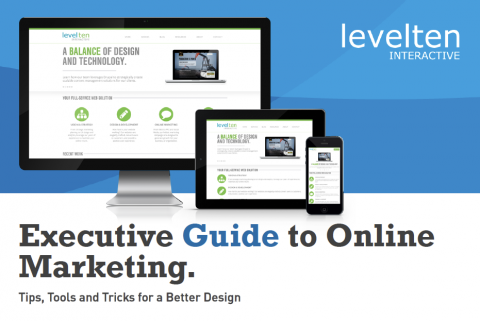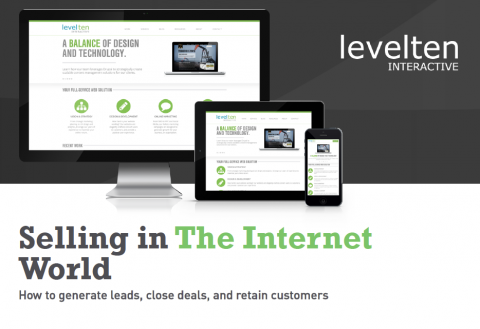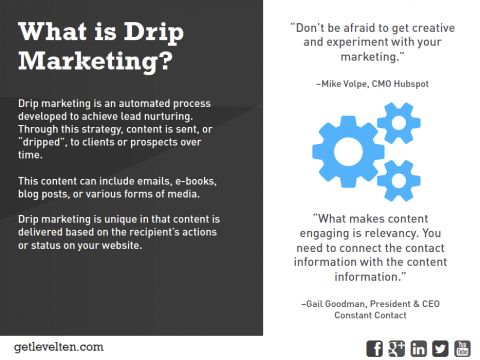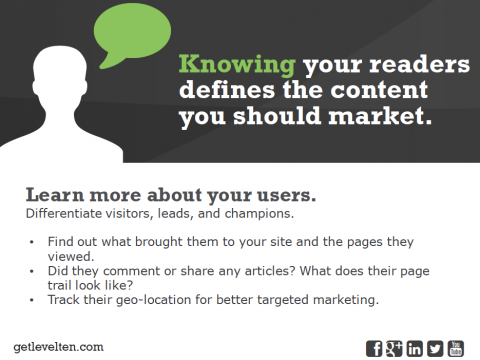
How To Create an eBook Template for Web Content Marketing
With the rise of eReaders like Kindle and iPad and the explosion of mobile device usage, ebooks are taking the lead when it comes to generating leads for your business. In 2011, Amazon ebook sales overtook print book sales. It is estimated that by 2016 ebook sales might be a $10 billion per year market.
According to Hubspot (an automated marketing solutions company), “Marketing ebooks are a key component of powerful lead generation”. In this article, I discuss the reasons your business should create ebooks and provide some helpful tips to get your team up and running.
Why write ebooks?
Publishing an ebook is free. Yep, free. The only thing you really lose by doing it is time. However, since most businesses are already generating content through blog posts, white papers and brochures, it’s usually quite simple to consolidate and edit existing assets to create very nice ebooks.
It gives you credibility. Similar to blogging, thought leaders are born through their readers. If you are an expert in your industry and regularly promote your services, giving your customers free ebooks and providing additional reading to target prospects can not only differentiate you, but also open up additional opportunities.
Access beyond the web. Scratch your head and disagree if you want, but I personally find that by offering downloadable PDFs to your readers, you actually gain access to marketing on their hard drive. Bookmarks are nice, but when your eBook resides on a users' desktop, the user is reminded that you are there. If you are like me and rarely organize the documents on your desktop, this provides a very nice brand impression.
It’s easy marketing. While most forms of marketing need to be constantly updated and watched, an ebook is something that lives on its own and can gain you new followers and customers without you doing a whole lot beyond the initial writing and publishing of the book. Of course, you’ll have to market it, too, but if you’re already doing that for your business, it’s pretty easy to add the ebook into your existing campaign.
How to create ebooks:
So, now that you know the reasons for creating an ebook, what is the process for creating them? Sure, you can use InDesign, Illustrator or some other professional solution, but what does that get you? As a designer, I would prefer not to sit around editing ebooks all day and I find it irresponsible to force non-designers into learning the Adobe suite.
Power Point is actually a lightweight, simple program for ebook templates. Since PowerPoint is a very common program that businesses have access to and use, it’s simple to create and manage templates in a way that even the least experienced authors can understand.
When I started this process, I started looking at examples of other ebooks, then selected roughly a dozen common layouts that could be used. These layouts included several variations of covers, introduction pages, chapter breaks and page designs.
Note: you can create master slide templates in PPT, but I find that it’s easier to allow users to copy and paste templates from a controlled document rather than have them start from scratch. The user loses a little flexibility, but the company gains brand consistency.
Brand Consistency
Whether you are designing for web or print, brand consistency is a mandatory requirement. Attention to brand attributes, color schemes, fonts and other branding guidelines reinforce your brand and help support your value proposition and business objectives. We support LevelTen’s brand through the templates we created - coordinating colors, fonts, icons and page elements, etc.

Using Fontello
Leveraging Fontello, we selected several frequently used icons, then mapped characters to the icons using Fontello's "Customize Codes" and provided the company with access to the installable font. We then added it as a part of the ebook template. By using these icons as page elements, we keep a consistent look and feel across ebooks. Since the icons are fonts, they are very easily interchanged, resized and repositioned by non-graphical users.

Minor Challenges
Overall, the process was very simple, but not without some very minor challenges. One thing to note is that Mac and PC versions of PowerPoint do not play well together so it is best to have access to both. If you are using a PC, make sure you check your embedded fonts on a Mac when you save the final document to PDF. I found that PC's do not embed Open Type Fonts (OTF) particularly well so you will end up with loss of content (on Macs) unless you use and embed True Type Fonts (TTF) when saving to PDF.
On the other hand, if using a Mac, you cannot embed links that can open within Mac's Preview mode (which most Mac users use to read PDFs). We solved this problem by creating the PowerPoint links and embedding them from a PC. So your best solution is to finalize the document using a PC and use TTF fonts.
Final Thoughts
For any business that is serious about content marketing and/or provides premium content offers, creating an ebook template is a very simple and economical way to get started. I highly recommend using PowerPoint as a starting point since most people are familiar with it and know how to use it. LevelTen as created several ebooks using this process and feedback has been very positive.





